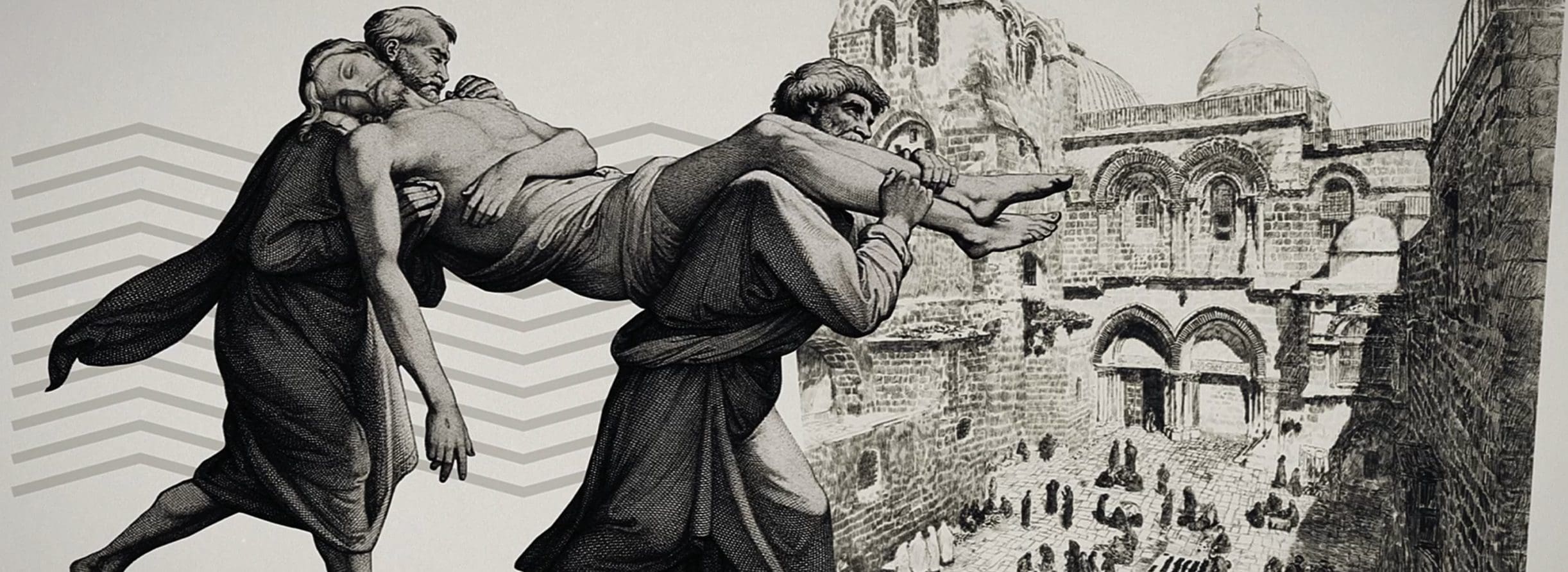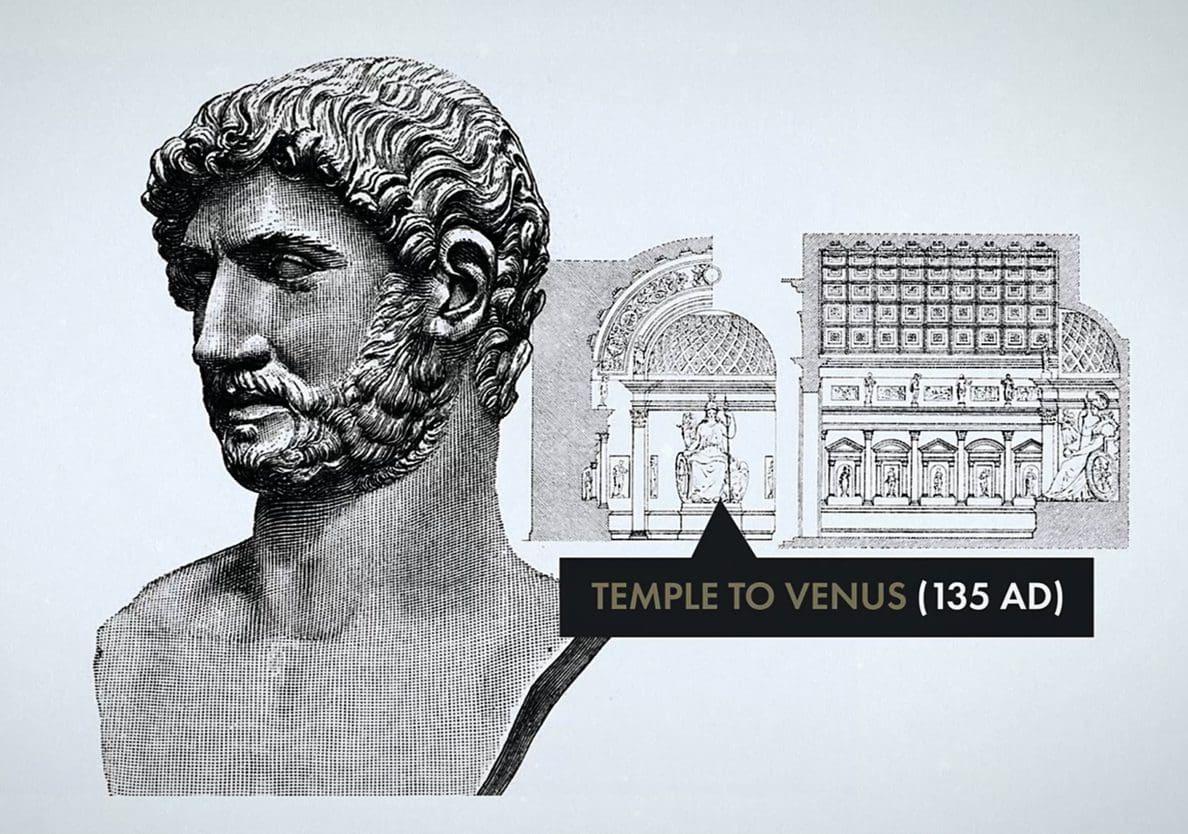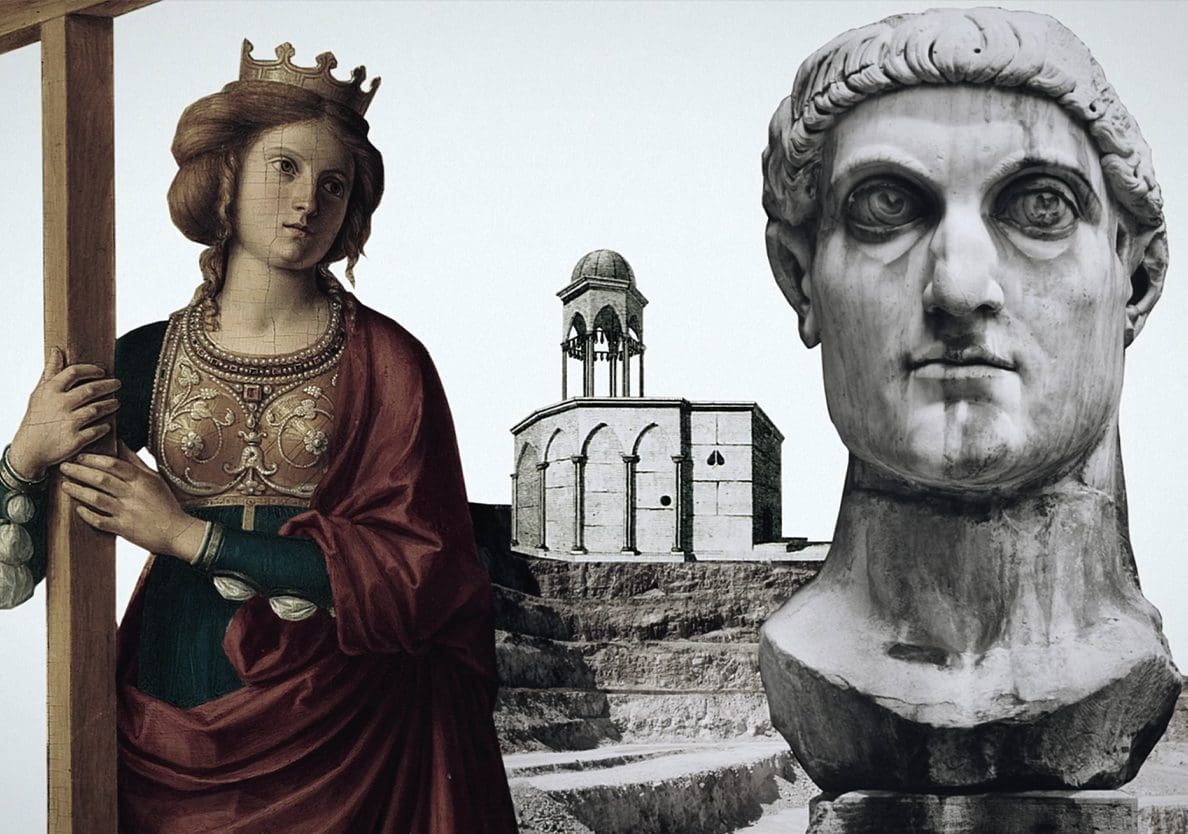The Church of the Holy Sepulchre is located in the busy Christian Quarter within the walls of the Old city of Jerusalem. Behind the Church’s claim to be built over top of the crucifixion site of Jesus (Golgotha/Calvary) and his rock-cut tomb is a couple thousand years of Christian history. Against it seems to be its location within the walls of the Old City and, perhaps, its millennia of Christian veneration that has led to a mishmash of confusing architecture.
To the problem of its location, it is known from the records of Josephus (Flavius Josephus, 1st century Roman historian) that during the time of Christ this area was outside of the city walls, but shortly after was incorporated into the city by Herod Agrippa’s so-called “Third wall” (41-44AD). Archaeological excavations conducted in the 1960s have demonstrated that the church area, long before Agrippa or the New Testament, back in the time of the kings of Judah (8th-7th centuries BC) was once a limestone quarry. This quarry was then repurposed as a cemetery (4 tombs have been discovered) in the first century BC, before being incorporated into the city proper by Agrippa.

In AD 135 Roman Emperor Hadrian supressed a large Jewish rebellion, expelled Jews from Jerusalem, renamed Jerusalem (to Aelia Capitolina) and all of Judea for that matter (to Palestina). Over the quarry-turned cemetery-turned city, he built a huge, raised platform filled in with dirt, and a temple dedicated to Venus (aka. Aphrodite). The area was completely and thoroughly covered.
The story of the Church of the Holy Sepulchre picks up again in the fourth century AD with the mother of Christian Emperor Constantine, Helena. During her pilgrimage to Jerusalem Christians living there showed her the site, identifying it as the location of Golgotha and the tomb Christ had been laid it. The area was promptly cleared of any remains of Hadrian’s temple, and a few hundred years after its burial the quarry turned graveyard was unearthed. Constantine built a rotunda around the tomb Christians identified as Jesus’, and a basilica where Christians could worship and pray.


Since the fourth century there have been many upgrades, switches of power, a few fires and restoration projects to get us to where we are today, nearly two thousand years later. But the truly intriguing prospect of the Holy Sepulchre that makes it stand out among other sites, is that the Christians living in Jerusalem had a preserved tradition of where Golgotha and Christ’s tomb was. The Christian church had lasted in Jerusalem all that time without interrupted leadership. Two hundred years after the site had been buried by Hadrian, they successfully predicted a first century graveyard would be under the pagan temple. Was it a lucky guess? Even in their day the location would have seemed an unlikely spot – it was inside their current-day walls and underneath a manmade platform that held a temple of Venus.
It, of course, can’t be proven archaeologically that the venerated tomb of Christ actually was the tomb Joseph of Arimathea gave to the Lord, but the place fits and the early Christian tradition is impressive.

Corie Bobechko is a daily co-host, speaker, and writer of Bible Discovery. She also hosts a YouTube channel that shows how history and archaeology prove the Bible. Her heart for seekers and skeptics has led her to seek truth and share it with others. Corie also has a Bachelor of Theology from Canada Christian College.
• Bryan Windle, “Tomb of Jesus Uncovered for First Time in Centuries”. Associated for Biblical Research. Published on November 04, 2016.
• Barkay, Gabriel. “The Garden Tomb: Was Jesus Buried Here?” Biblical Archaeology Review 12.2 (1986): 40–53, 56–57.
https://www.baslibrary.org/biblical-archaeology-review/12/2/2
• Murphy-O’Connor, Jerome. “The Garden Tomb and the Misfortunes of an Inscription,” Biblical Archaeology Review 12.2 (1986): 54–55.
https://www.baslibrary.org/biblical-archaeology-review/12/2/3
• Bahat, Dan. “Does the Holy Sepulchre Church Mark the Burial of Jesus?” Biblical Archaeology Review 12.3 (1986): 26–45.
https://www.baslibrary.org/biblical-archaeology-review/12/3/1
• Ross, J.-P. B. “The Evolution of a Church—Jerusalem’s Holy Sepulchre,” Biblical Archaeology Review 2.3 (1976): 3–8, 11.
https://www.baslibrary.org/biblical-archaeology-review/2/3/4






